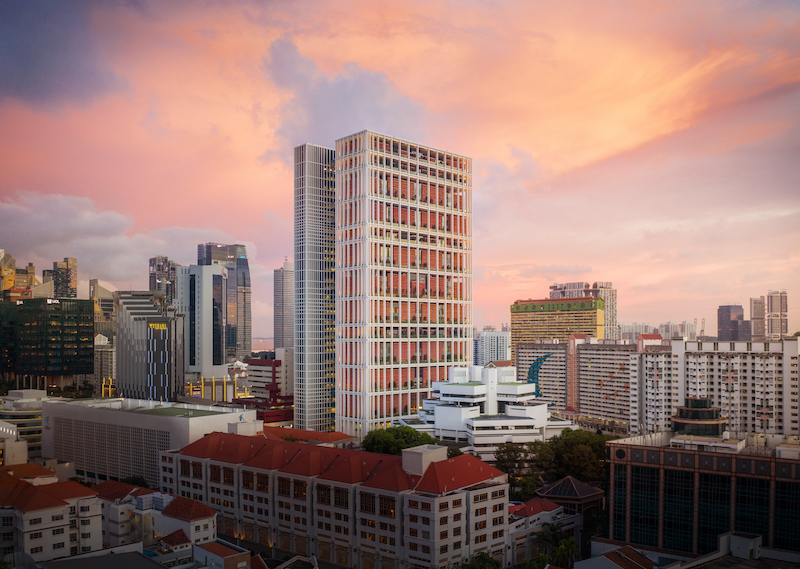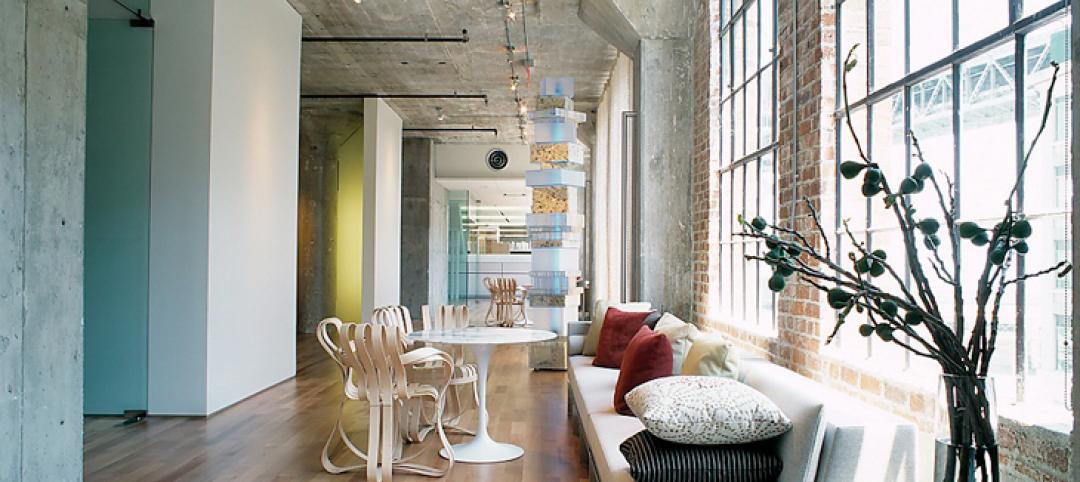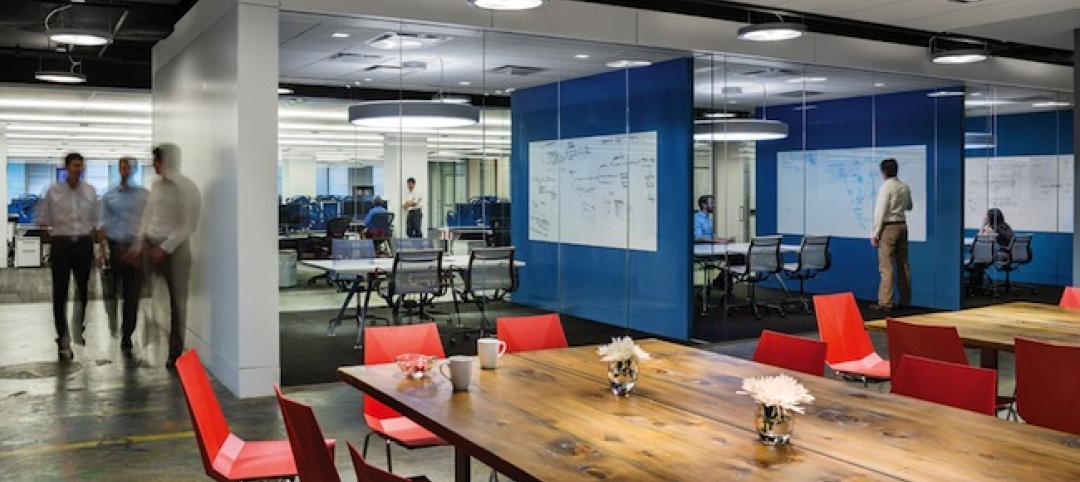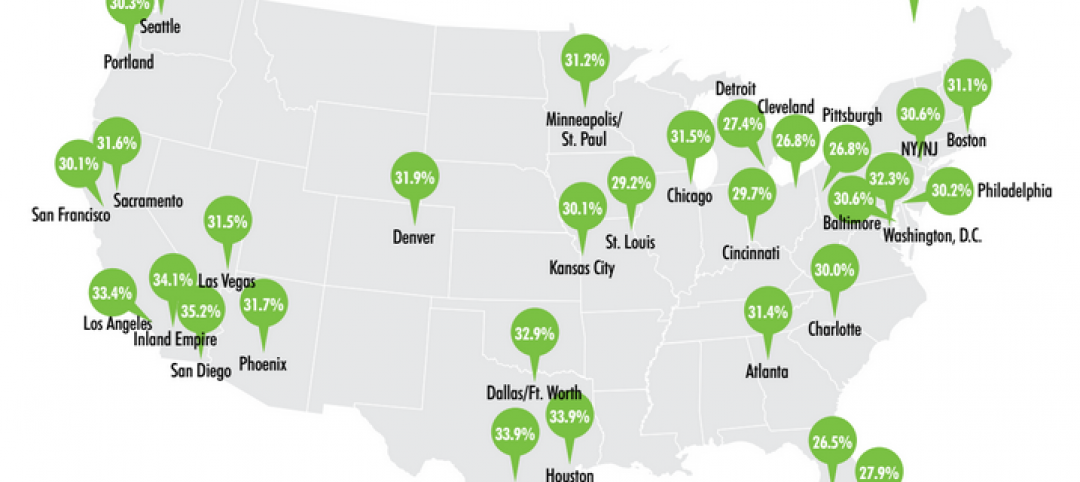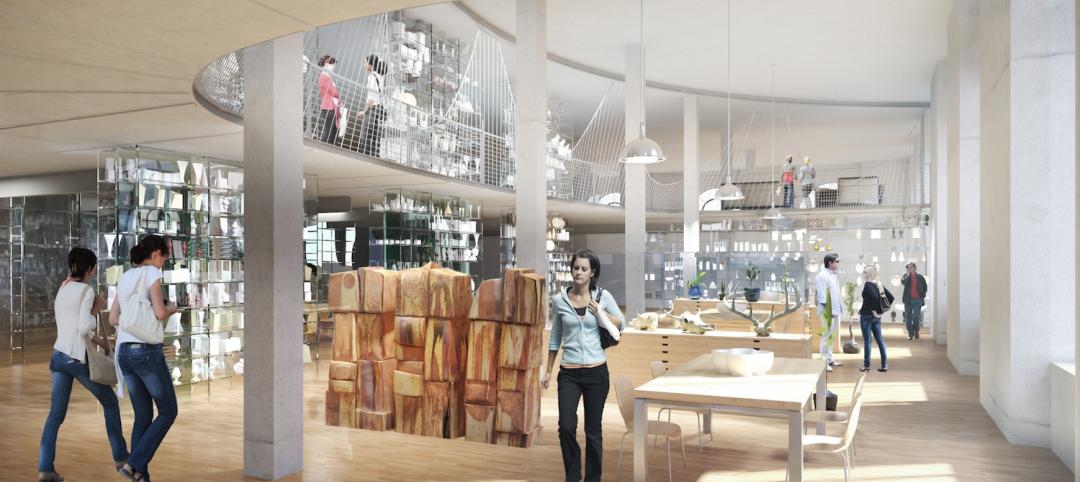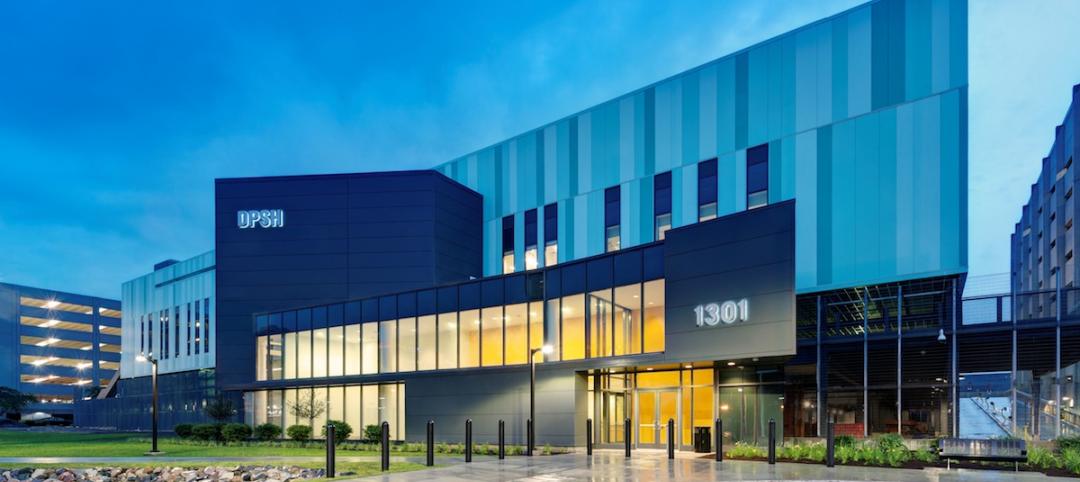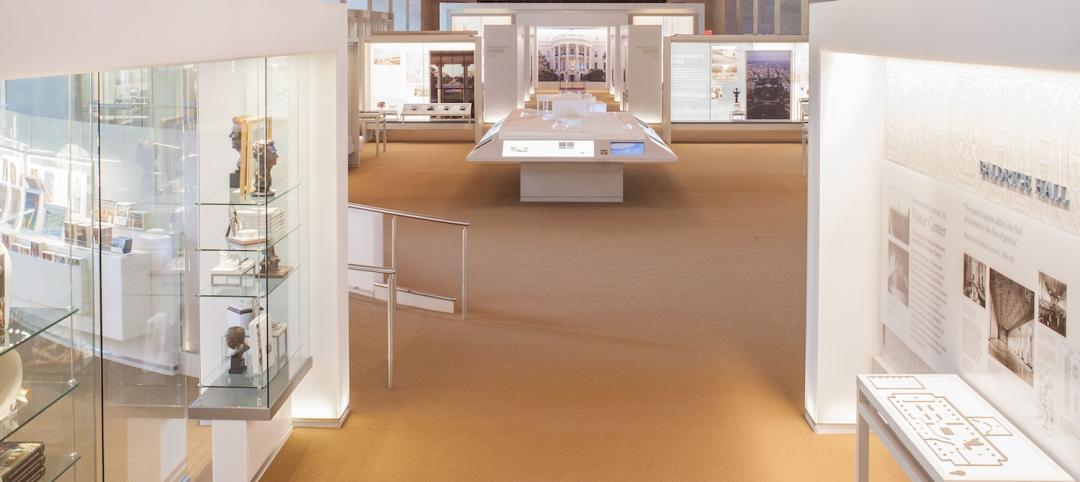At 35 stories, the State Courts Towers at Havelock Square is the tallest government building in Singapore. And while it’s been open since December 2019—when the State Courts started relocating from a nine-story building that dated back to 1975—details and images about its design and construction have only recently been made public by CPG Consultants, the S$450 million (US$334.6 million) project’s Principal Consultant and Architect.
The 178-meter (584-ft) building contains 53 courtrooms and 54 hearing chambers. The structure, designed by Serie + Multiply Consultants, is actually two slender buildings, the Court Tower and Office Tower, connected by 39 link bridges. The design optimizes visibility to the public, with courtroom boxes placed onto large “court trays” of different heights and sizes that are completely open in that there is no glazed façade around the tower.
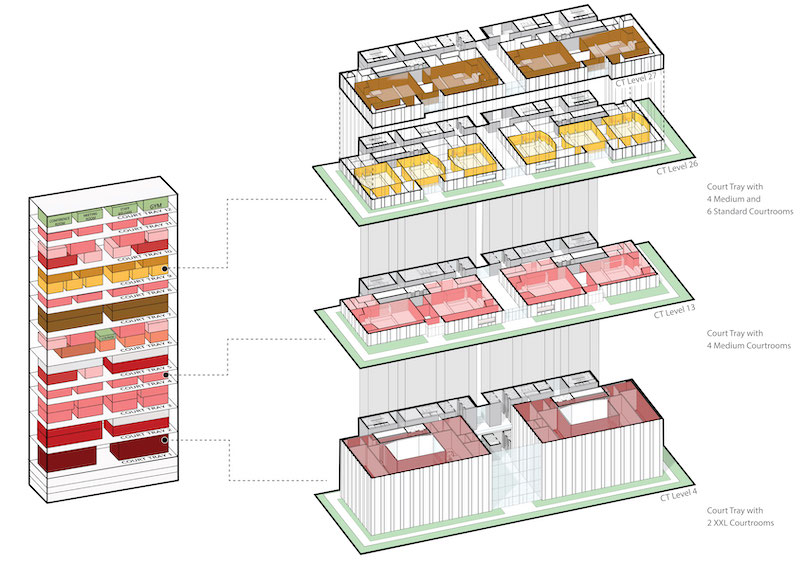
The towers' 53 courtrooms are placed onto “trays” of different sizes that are “open,” in that there's no glazed facade. Illustration: CPG Consultants
Each “tray” includes a garden terrace that filters sunlight and allows for views of the city. The courtrooms themselves are clad in pigmented precast panels, five to 12 meters in height, whose colors and textures match the tiled roofs of shophouses in Singapore’s nearby Chinatown.
“The relationship between the city and its civic buildings was our primary interest for this project,” explains Christopher Lee, Principal at Serie Architects UK. “The new State Courts Towers should be a building that is symbolically open and accessible to the public. Its design language is drawn from the architecture typical of the city and hence is both familiar and surprisingly new to its citizens.”
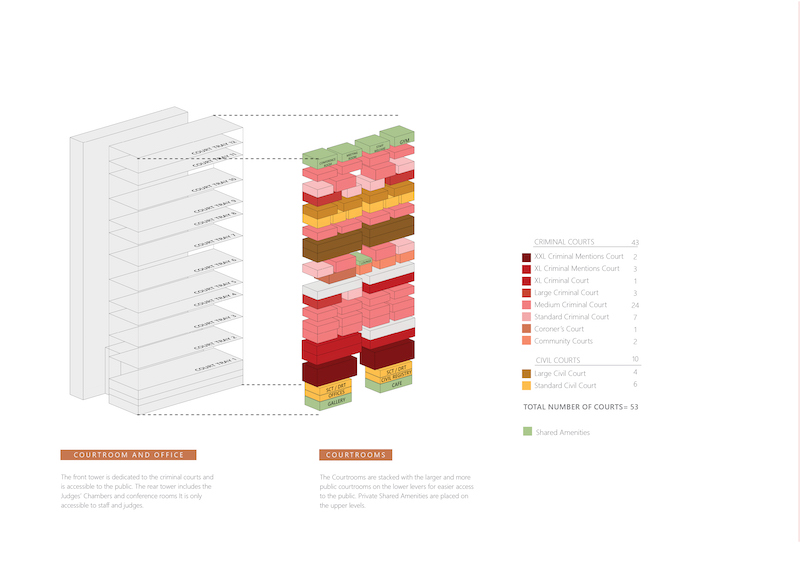
The front tower includes the courtrooms and is accessible to the public; the back tower is for judges' chambers and conference rooms. The towers are linked by 39 bridges. lIlustration: CPG Consultants; Image: Khoogj
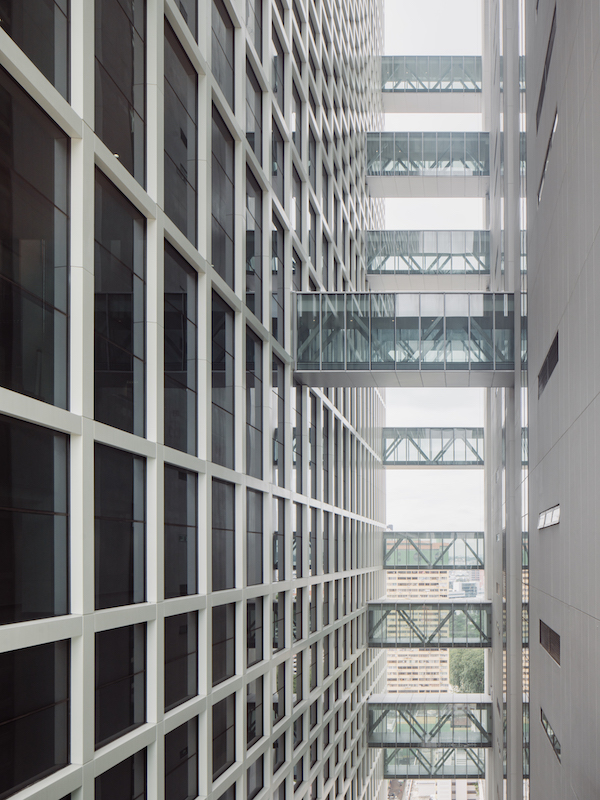
A SMART, TRANSPARENT BUILDING
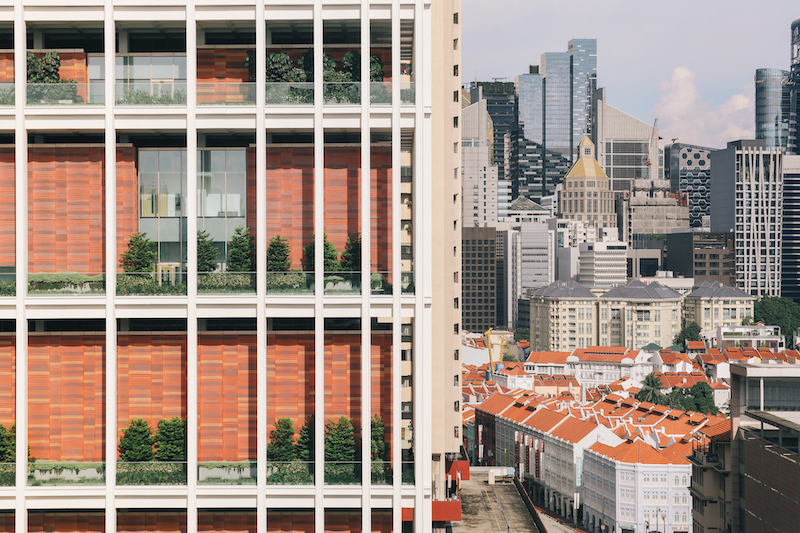
The cladding for the courtrooms is precast panels, 5 to 12 ft in height, whose colors and textures match to roofs of nearby shops in Singapore's Chinatown. Image" Finbarr Fallon
The office tower, for judges’ chambers and staff offices, features a vertical façade that expands where light and views are required in the middle, and contracts where the service core is located. Horizontal grids draw the viewer’s eye across the façade and to the sky.
The towers include a coworking space managed by the Singapore Academy of Law, for attorneys and tech companies; a theatrette, business center, cafeteria, roof garden and sky terraces, and a library and auditorium located in the basement.
The complex’s smart building features include facial recognition and automated building management processes for security and MEP systems. Other IT or web-enabled services introduced include video-conferencing facilities and interactive self-service kiosks. A universal design approach was adopted to ensure that it is user-friendly to the judges, persons in custody, and the public, for example in providing Assistive Listening Systems for court attendees and in all its courtrooms, digital wayfinding through apps.
The State Courts Towers is an environmentally sustainable building, with green building features incorporated in its design, such as solar panels and condensate water recovery systems.
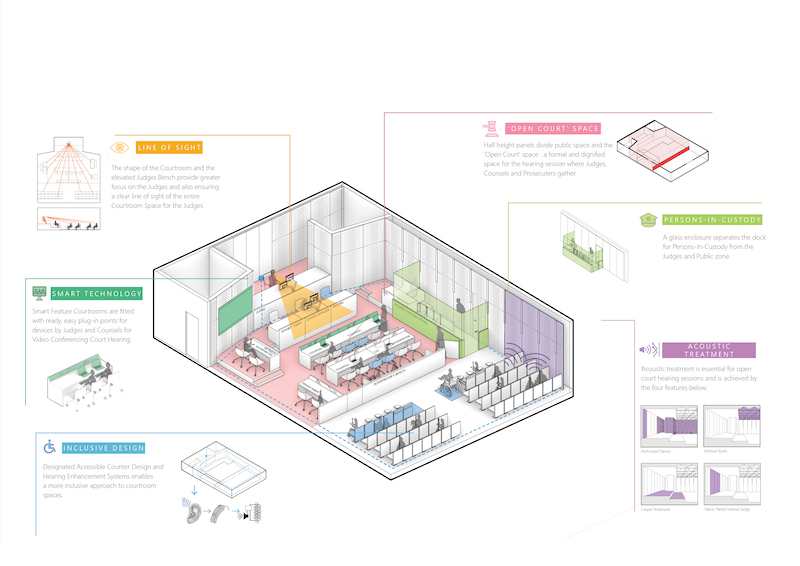
Open space, acoustics, user inclusion, visibility, and smart technology were important factors in the design of the courtrooms. Illustration: CPG Consultants; Image: Khoogj
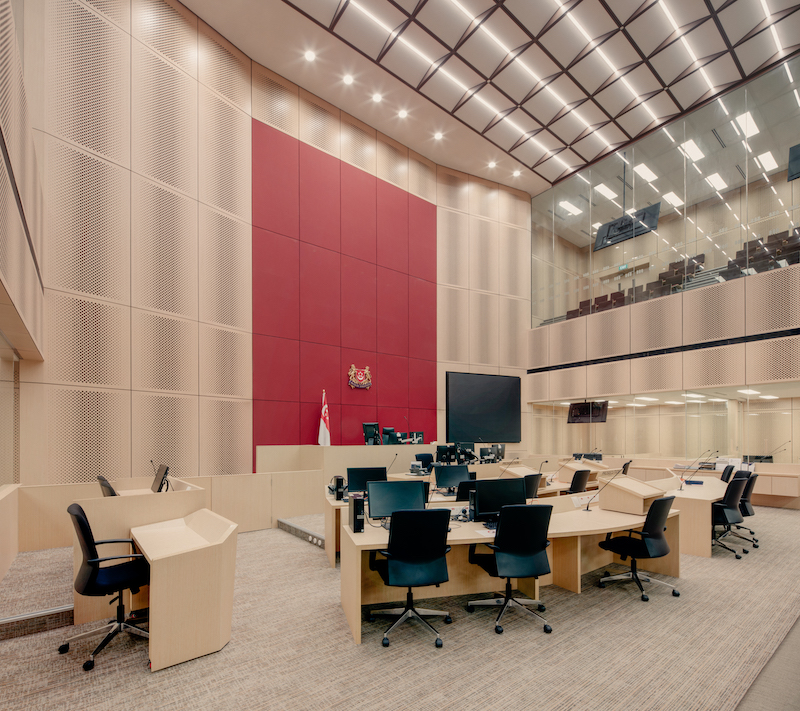
Related Stories
| Dec 28, 2014
AIA course: Enhancing interior comfort while improving overall building efficacy
Providing more comfortable conditions to building occupants has become a top priority in today’s interior designs. This course is worth 1.0 AIA LU/HSW.
| Dec 28, 2014
10 key design interventions for a healthier, happier, and more productive workplace
Numerous studies and mountains of evidence confirm what common sense has long suggested: healthy, happier workers are more productive, more likely to collaborate with colleagues, and more likely to innovate in ways that benefit the bottom line, writes Gensler's Kirsten Ritchie.
| Dec 28, 2014
Workplace design trends: Make way for the Millennials
Driven by changing work styles, mobile technology, and the growing presence of Millennials, today’s workplaces are changing, mostly for the better. We examine the top office design trends.
| Dec 6, 2014
Future workplace designs shouldn’t need to favor one generation over another, says CBRE report
A new CBRE survey finds that what Millennials expect and need from offices doesn’t vary drastically from tenured employees.
| Nov 18, 2014
New tool helps developers, contractors identify geographic risk for construction
The new interactive tool from Aon Risk Solutions provides real-time updates pertaining to the risk climate of municipalities across the U.S.
| Nov 10, 2014
5 guiding principles for solving airflow issues in open-plenum office spaces
Although architecturally appealing, exposed ceilings can create unwanted drafts and airflow problems if not engineered correctly. McGuire Engineers' Bill Stangeland offers tips for avoiding airflow issues on these projects.
| Nov 5, 2014
Survey: More than 75% of workload takes place without face-to-face interactions
With the rise of technology, much of the workday—even the most productive morning hours—is spent corresponding via email or conference call, according to a recent survey of corporate workers by Mancini•Duffy.
| Nov 3, 2014
An ancient former post office in Portland, Ore., provides an even older art college with a new home
About seven years ago, The Pacific Northwest College of Art, the oldest art college in Portland, was evaluating its master plan with an eye towards expanding and upgrading its campus facilities. A board member brought to the attention of the college a nearby 134,000-sf building that had once served as the city’s original post office.
Sponsored | | Oct 23, 2014
From slots to public safety: Abandoned Detroit casino transformed into LEED-certified public safety headquarters
First constructed as an office for the Internal Revenue Service, the city's new public safety headquarters had more recently served as a temporary home for the MGM Casino. SPONSORED CONTENT
| Oct 19, 2014
White House Visitor Center reopens in Washington, D.C.
Designed by SmithGroupJJR and Gallagher & Associates, renovated center shows public its unique role as office, stage, museum, park, and home.


